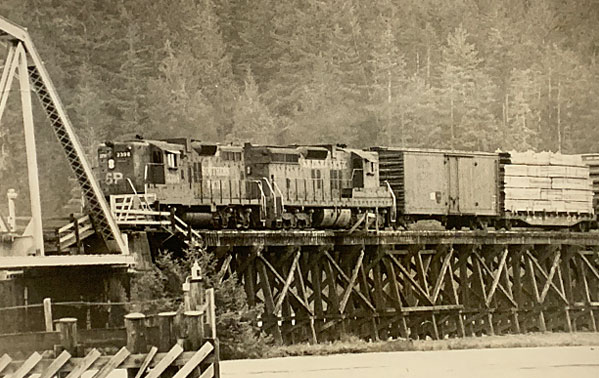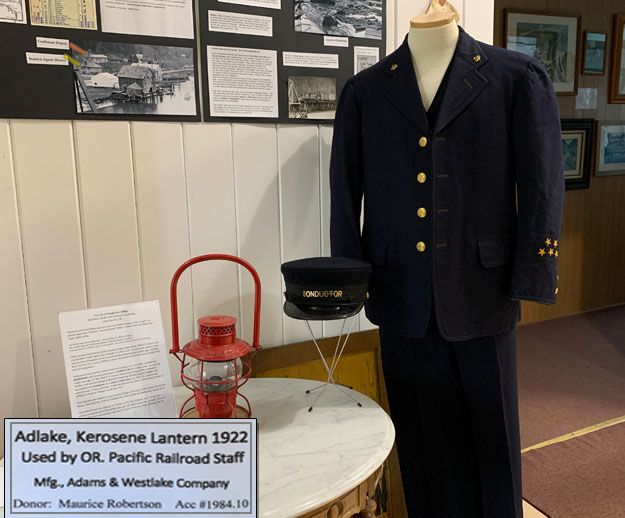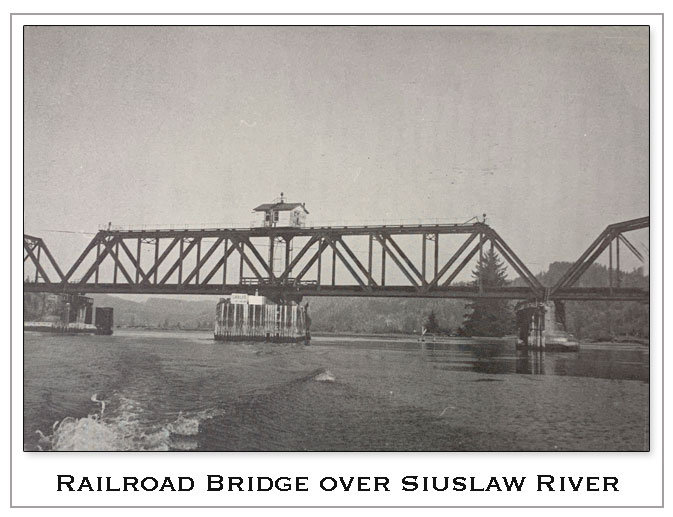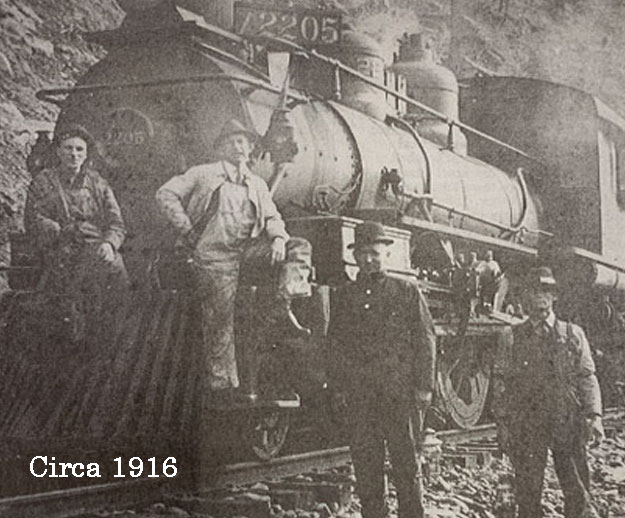Our newest rotating exhibit honors the history of the Cushman Railroad. The exhibit features images, captions and display items to celebrate the builders of the Cushman Bridge and train crew members. The 134-mile railroad enabled transportation for passengers and freight between Eugene and Coos Bay. The bridge was an achievement that came to fruition when rail companies in the 1880s began envisioning the need for a rail line to the coast. In 1916 the Eugene to Coos Bay line was completed. It allowed for faster and more reliable shipment of goods in and out of the Siuslaw Valley and proved to also be a welcomed boost to the local economy. Historical images of the bridge construction are featured in the exhibit.
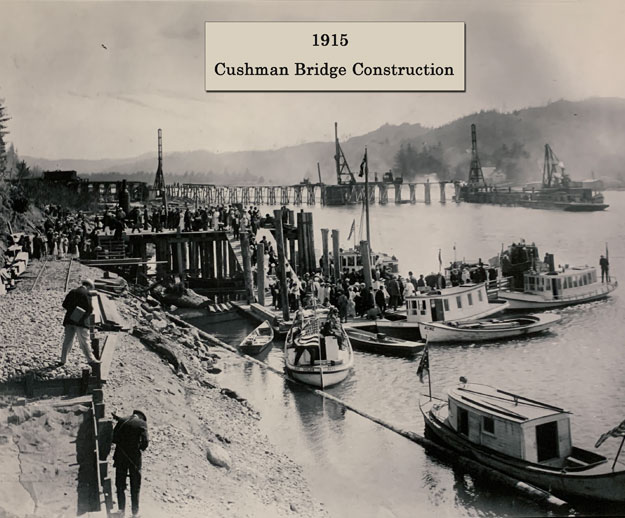 Building the bridge was an arduous task. In 1912, numerous railroad camps were set up during construction of the rail line. Jobs were abundant not only on the rail itself, but throughout the town. Folks in Florence and nearby areas split rails to sell to Southern Pacific Railway (“SP”). Farmers and others worked to provide the food, lumber and other resources required for the influx of the many construction workers.
Building the bridge was an arduous task. In 1912, numerous railroad camps were set up during construction of the rail line. Jobs were abundant not only on the rail itself, but throughout the town. Folks in Florence and nearby areas split rails to sell to Southern Pacific Railway (“SP”). Farmers and others worked to provide the food, lumber and other resources required for the influx of the many construction workers.Further Down the Line at Ada Station
Workers cleared the right-of-way, built tunnels, layed ties, and blasted two tunnels in the Canary Area that measured 1600 feet in length.
The Railroad Crew:
Conductor
Most of us are familiar with the job of a train conductor who walked the passenger isle to collect tickets, and announce upcoming train stops. Additionally, they were also responsible for communication with crew members while managing passenger safety and freight transportation. Get an up-close look at a conductor’s uniform, hat and lantern in our exhibit.
Brakeman
There are few railroad jobs as dangerous, and perhaps less ‘acknowledged’ as that of a railroad brakeman. Before the late 19th century, slowing down or stopping a train was done by operating the brakes manually on each of the train’s cars. As time went on, brake technology advanced to include airbrakes. However, brakemen were still required to climb on the train’s roof to manually control its brakes when the airbrakes failed, or to release a section of cars from the train. This entailed running on top of the rail car and leaping from one train car to the next to adjust the brakes. The brakeman would perform the task regardless of wind and weather conditions while maintaining their balance on a train in motion. Climbing aboard a moving train frequently resulted in injuries when brakemen either slipped or fell from the train. This might occur when they ran ahead of the engine car to operate a manual switch. From the rear, the brakeman would need to close the switch, then run along the track to catch up and re-board the train.
Station Agent
The Agent held an important position in overseeing the operation of the depot building and station. This included selling tickets, handling mail, baggage, freight and express shipments. The agent was also required to have knowledge of Morse code. Although the telephone on railway lines gradually replaced most telegraph use, the telegraph remained as a backup on all lines for many years. At times, the telegraph was the only available means of communication. Agent’s hours were long, as farmers, businesses and town folks depended on the agent to ship crops, freight and products, both inward and outward bound.
Featured as a rotating exhibit, the History of the Cushman Railroad exhibit is currently on display (for approximately two months) on the first floor of the Museum. The Museum is open Tuesday through Sunday, noon to 4 p.m. We welcome your visit.

